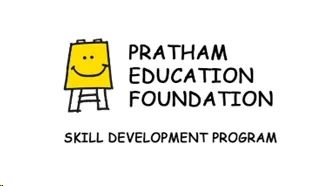Planning to visually convey your purpose and gain the support of your followers and community?
Well, then before diving into specific design elements, the first step is a clear understanding of the non-profit’s mission.
This core statement defines the organization’s why – its purpose, target population, and desired impact.
Every design decision, from logo design to infographic design, should be rooted in the mission. This ensures visual communication is consistent and reinforces the organization’s central message.Smile Foundation, a non-profit advocating for empowering underprivileged children and women through education can frame its mission as “ensuring fair opportunity for women and girls” for communication purposes. This statement highlights the organization’s focus on gender equality and empowerment.

Inside this article,
Key elements for branding nonprofit organization
Some must haves for your designs include:
1. Logo and branding
A strong logo is the cornerstone of a non-profit’s visual identity. It should be visually appealing, memorable, and clearly communicate the organization’s essence. Consistency is key.
The logo and accompanying colors, fonts, and design elements should be used consistently across all materials – print, digital, and social media.
Pratham Education Foundation, an Indian NGO dedicated to improving children’s literacy, uses a vibrant logo featuring a yellow writing board. It looks quirky and has a big bright smile, visually indicating how well they understand children. Similarly, their skill development program brochures and website maintain the same color palette and imagery, reinforcing the organization’s brand identity.

2. Imagery
Powerful images have the ability to tell a story without words. Non-profits should leverage photography and illustrations that resonate with their cause and evoke emotions in their audience. These images can showcase the beneficiaries, the work being done, and the impact created.
CRY – Child Rights and You, a non-profit advocating for children’s rights in India, uses compelling photographs of children on their website and social media platforms. These images highlight the vulnerabilities faced by children and connect emotionally with their supporters, encouraging action and donations.
3. Infographics and data visualization
Non-profits often deal with complex information, such as program statistics or impact reports. Infographics and data visualization tools can effectively translate this information into engaging visuals.
Clear charts, graphs, and illustrations can increase transparency, build trust with supporters, and illustrate the value of the organization’s work.
Designing for different platforms
If you are designing your content for various platforms, then some things you need to keep in mind are:
1. Website
The non-profit’s website is its digital hub and a crucial communication tool. Creating a user-friendly website with clear navigation, mobile responsiveness, and accessibility is essential. The website should effectively communicate the mission, highlight success stories, and provide clear calls to action for donations and volunteer opportunities.
Smile Foundation India’s website dedicated to educational donations is a great example of user-friendly design. The website features clear visuals of children in classrooms, along with concise information about the educational programs offered.
2. Social media
Social media platforms offer invaluable opportunities for nonprofits to engage with their supporters. Design elements need to be adapted for different social media platforms to maximize engagement. Eye-catching visuals, short videos, and informative infographics can attract attention and encourage sharing.
Nanhi Kali, an organization working towards ending child marriage in India, uses their Instagram account effectively. They share visually appealing posts featuring empowered girls, statistics on child marriage, and calls to action to support their work.
3. Print materials
Print materials like brochures, flyers, and annual reports remain valuable tools for nonprofits. Even with a limited budget, impactful print designs can be created. Utilizing templates, choosing high-quality visuals, and keeping branding consistent can elevate the look and feel of printed materials.
Also read:
Design on a budget: Creative solutions for startups and small businesses
Budget branding for small businesses
Telling your story visually: Engaging the audience
Now it’s time to engage with your audience as your designs and platforms are in place. Here are some ideas you can try to convey your brand’s story visually and forge an emotional connection with your crowd:
1. Creating a visual narrative
Design goes beyond aesthetics.
By strategically using all the elements mentioned above, nonprofits can create a visual narrative that showcases their impact and resonates with their target audience. This narrative could highlight the problem they address, the solutions they implement, and the positive outcomes achieved.
2. Engaging the audience
Design should be centered around the target audience.
Visually appealing content that speaks to their emotions and values can inspire action. Use visuals to evoke empathy, highlight success stories, and create a sense of connection with the organization’s mission.
3. Maintaining consistency
A brand style guide is crucial for non-profits.
This document outlines the organization’s visual identity, including logo, colors, fonts, and imagery guidelines. Ensuring consistency across all communications helps build recognition and trust. It’s essential to regularly review and update the style guide as the organization evolves.
Conclusion
Visual communication is a powerful tool for non-profits to communicate their mission, engage supporters, and create lasting impact. By investing in thoughtful, mission-driven design, organizations can elevate their brand, inspire action, and achieve their goals.
- Start with a design audit to evaluate your current visual communications.
- Assess your logo, website, social media, and print materials.
- Identify areas for improvement.
- Implement changes that align with your mission.
- Curate content that resonates with your audience.
With a strong visual identity and engaging content, your non-profit organization can effectively communicate its story and make a difference.




